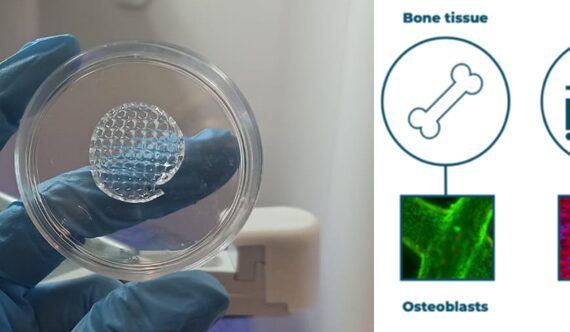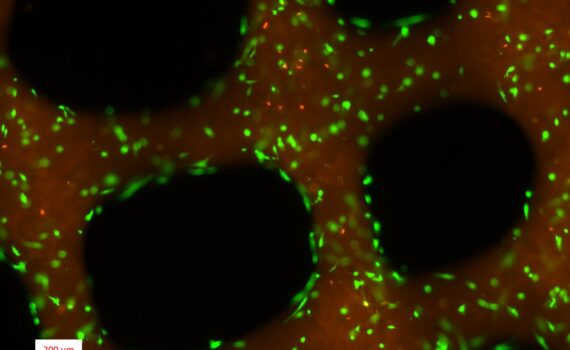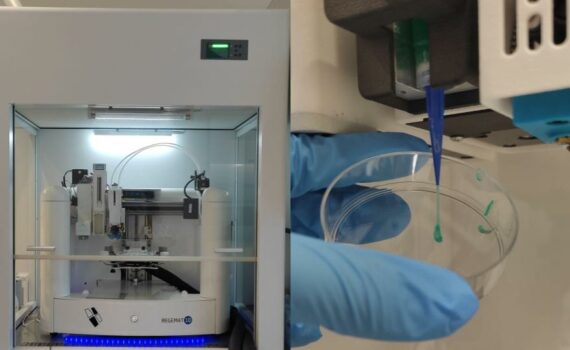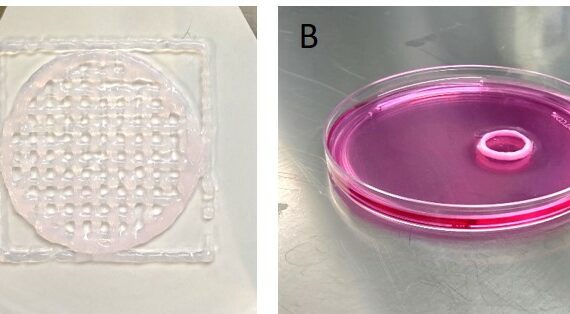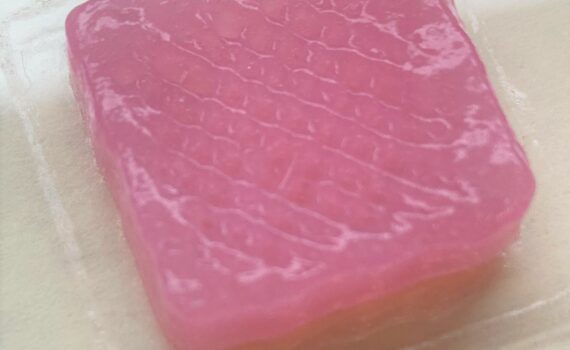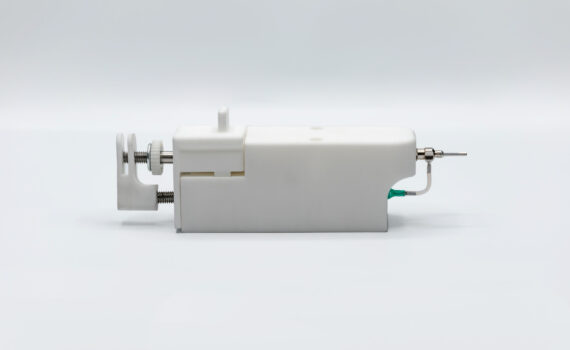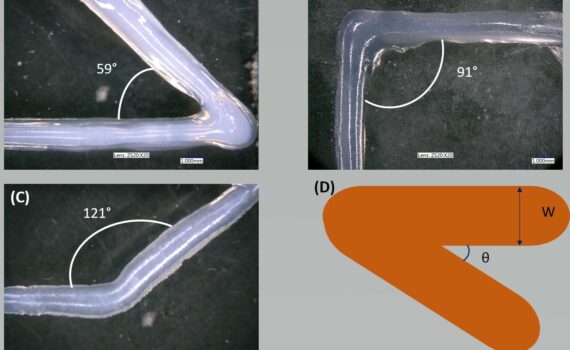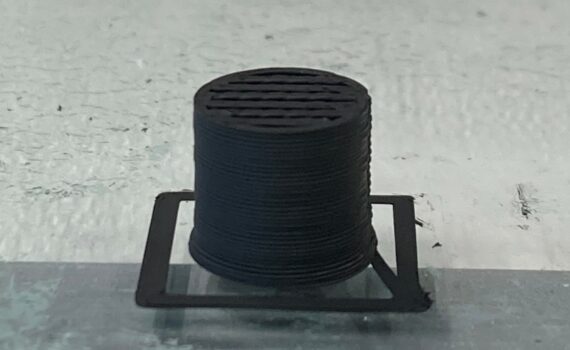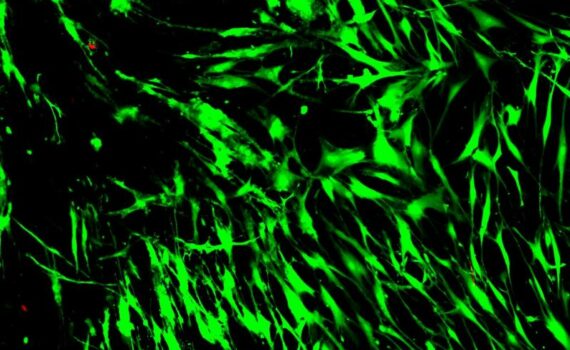+10 INTRODUCTION STABLE INX© (BIOINX©) is a synthetic, shear thinning, cell-interactive and non-biodegradable hydrogel bioink which has been specifically designed for the fabrication of scaffolds for tissue engineering. Due to its shear thinning behavior, it allows for an easy printing process. It exhibits a low viscosity at high shear rates, […]
Extrusion Based
00 INTRODUCTION Gelatin hydrogels have attracted significant attention in the field of regenerative medicine, and more specifically, in their use as wound dressings and artificial tissue replacements. Among the different photo-crosslinkable gelatin materials, gelatin methacryloyl (GelMA) hydrogels display a series of advantages, such as good biocompatibility (including biosafety and biological […]
00 INTRODUCTION Working in sterile conditions is key for culturing our scaffolds in aseptic conditions and avoiding contamination. In a 3D Bioprinting protocol we have many sources of contamination, the biomaterial, the cells itself or the 3D bioprinting protocol. The scaffolds with or without cells have the same requirements in […]
+30 INTRODUCTION Type I collagen is the most abundant type of collagen in the human body, as a major structural matrix protein in skin and many other tissues including bone, tendon and fibrous connective tissues. ColBioink is a sterile solution of highly purified collagen type I from porcine origin that […]
+20 INTRODUCTION Collagen is the most abundant structural protein in the extracellular matrix (ECM), accounting for 30% of the total body protein content in humans. Amongst the 28 types of collagen that have been already identified, collagen type I is the most abundant by far, playing its most prominent functional […]
+10 INTRODUCTION Alginate is a FDA-approved natural polysaccharide extracted from brown algae with multiple applications in the food, cosmetic, and pharmaceutical industries. Its outstanding features including high biocompatibility, ease of gelation, tailorable rheological properties and degradation kinetics make it ideal for 3D bioprinting applications. Alginate hydrogels can be ionically crosslinked […]
+50 ABSTRACT 3D bioprinting has recently emerged as a crucial technology in tissue engineering, yet there are still challenges in selecting materials to obtain good print quality. Therefore, it is essential to study the influence of the chosen material (i.e., bioink) and the printing parameters on the final result. The […]
+20 Introduction Electrically conductive thermoplastic elastomers hold idyllic attributes for the 3D printing of flexible and electroconductive scaffolds with applications in electronics, electromagnetics and computer industries. Beyond these applications, they have a tremendous potential in the biomedical sector. Due to their enhanced biocompatibility, they can be used as biosensors and […]
+20 In the picture: 👀 99% of cell viability with ColBioink formulation. This material is a native Type I collagen formulation that comes from porcine origin and is in a “ready to print format”. It also ensures that the formed structures can be safely grafted without immune rejection and used […]
00 “Next generation gelatin-based bio-ink.” Introduction X EASYGEL INX© is a gelatin-based shear thinning, cell-interactive ECM mimicking ink. X EASYGEL INX combines all the benefits of conventional gelatin/gel-MA based inks in combination with a highly improved printing process thanks to its shear thinning behavior, as schematically presented in Figure 1a. […]

